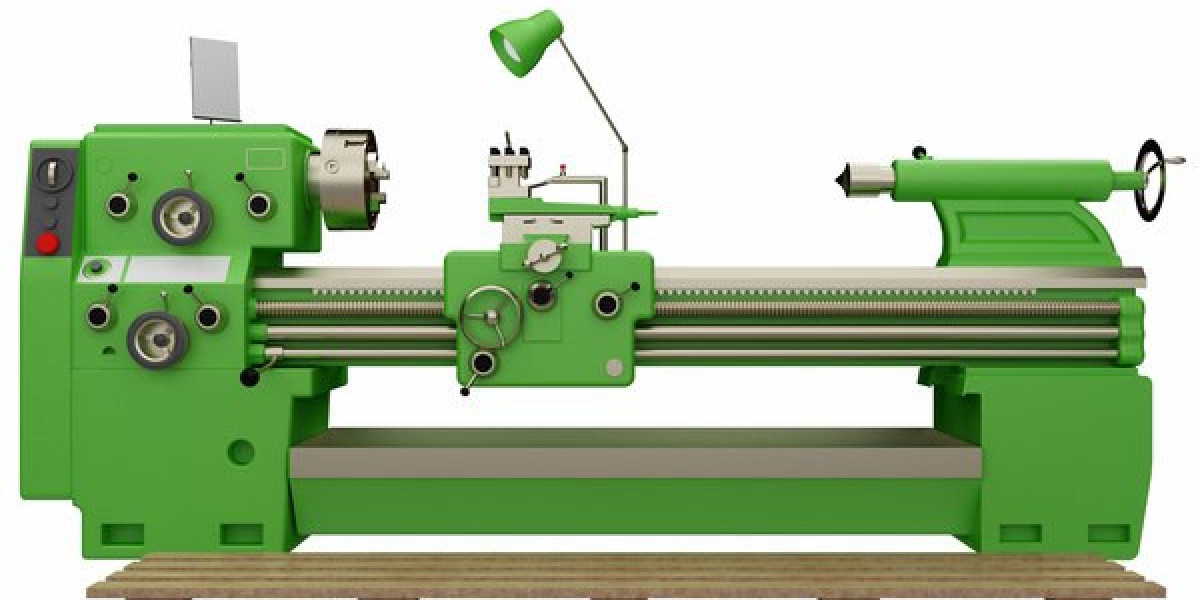The lathe machine is one of the most versatile machines used in manufacturing and workshop for metalworking. It is used to remove materials from a workpiece to give it a desired shape and size. Some of the key operations performed on a lathe include turning, facing, grooving, drilling, boring and threading among others.
Types of Lathe Machines
There are different types of Lathe Machine available depending on the size, operation, controls and other factors. Some common types include:
- Metal lathe: Used for machining metals like iron, steel, aluminum etc. They come in engine, center, turret, copying and other variants.
- Wood lathe: Used for shaping wood and other materials like plastic. These come as mini, midi and full-size wood lathes.
- CNC lathe: Computer numerical control lathes offer automated machining capabilities. They are accurate and multifunctional.
- Benchtop lathe: Smaller in size, these can be kept on a workbench for hobby and job shop use.
- Multi-purpose lathe: Capable of performing turning as well as milling operations to remove material.
Each lathe type has applications based on the size of workpiece, required accuracy, production volume and other production needs. Proper selection ensures efficient machining.
Mechanism and Operation
At its core, a lathe machine consists of a bed with a headstock at one end and a tailstock at the other. The headstock houses the main spindle that rotates the workpiece. Most lathes are between 6 to 15 feet long.
The machining operation begins by clamping and centering the workpiece securely between lathe centers, chuck or faceplate. The spindle rotates the workpiece as a single-point cutting tool or multiple-tool assembly is fed into it manually or automatically.
As the workpiece rotates, the cutting tool removes layers of material to generate the desired shapes like cylindrical, tapered surfaces and complex profiles. The tool and workpiece movement is controlled using feeds, speeds and depth of cut adjustments.
Common Machining Operations
Some operations frequently performed on lathes include:
- Turning: Used for generating cylindrical surfaces by removing material parallel to the lathe's axis of rotation.
- Facing: Cuts square or at an angle across the end of the workpiece to create a flat surface perpendicular to the axis.
- Parting: Used for grooving and creating circular cuts to separate and part off finished components.
- Taper turning: Involves generating conical tapers by controlled offsetting the cutting tool at an angle.
- Thread cutting: Produces external or internal screw threads through single-point tool forming or dies.
- Drilling and boring: Used for creating holes by rotating drills or boring bars while workpiece remains stationary.
- Grooving and Parting: Creation of grooves and circular cuts for keyways, undercuts etc.
Proper tool selection, speeds/feeds calculation and application technique ensure high precision and surface finish from lathe operations.
Accuracy and Applications
Lathe machines find widespread industrial application as they offer excellent roundness, concentricity and dimensional accuracy up to ±0.005 mm. Some common uses of precisely machined lathe parts include:
- Automotive components like gears, camshafts, cylinders and engine parts.
- Aerospace equipment like turbines, tubing, brackets, bearings.
- Medical devices components such as hip, knee implants, dental parts.
- Electronics parts like small intricate gears for clocks, headphones.
- Precision engineering items like instrument panels, valves, fittings.
With capabilities like multi-axis machining, automation, higher power and accuracy - modern lathes continue enabling critical manufacturing applications across industries. Their versatility makes them indispensable in workshops, job shops, production lines and prototyping environments worldwide.
Safety Considerations
When operating lathe machines, safety should be the top priority. Some best practices include:
- Use of appropriate guarding and protection devices around cutting areas.
- Ensure firm clamping of workpiece to avoid kickbacks while machining.
- Clamp tool holding fixtures securely and orient sharp edges away from the operator.
- Wear firm-fitting clothing, safety glasses and gloves as per requirements.
- Provide adequate lighting and clear floor area around machine controls.
- Learn machine safety features and emergency stop locations before use.
Following basic workshop safety procedures and precautions can prevent serious injuries when working on lathe operations. Proper training and supervision ensure its safe usage.
Get More Insights on Lathe Machine
Get this Report in Japanese Language- 旋盤
Get this Report in Korean Language- 선반 기계
About Author-
Money Singh is a seasoned content writer with over four years of experience in the market research sector. Known for her strong SEO background, she skillfully blends SEO strategies with insightful content. Her expertise spans various industries, including food and beverages, biotechnology, chemical and materials, defense and aerospace, consumer goods, etc. (https://www.linkedin.com/in/money-singh-590844163)








